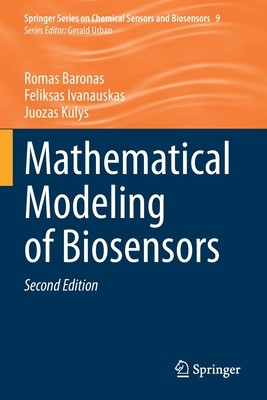
- We will send in 10–14 business days.
- Author: Romas Baronas
- Publisher: Springer
- ISBN-10: 3030655075
- ISBN-13: 9783030655075
- Format: 15.6 x 23.4 x 2.4 cm, minkšti viršeliai
- Language: English
- SAVE -10% with code: EXTRA
Reviews
Description
Biosensors are analytical devices in which speci?c recognition of the chemical substances is performed by biological material. The biological material that serves as recognition element is used in combination with a transducer. The transducer transforms concentration of substrate or product to electrical signal that is amp- ?ed and further processed. The biosensors may utilize enzymes, antibodies, nucleic acids, organelles, plant and animal tissue, whole organism or organs. Biosensors containing biological catalysts (enzymes) are called catalytical biosensors. These type of biosensors are the most abundant, and they found the largest application in medicine, ecology, and environmental monitoring. The action of catalytical biosensors is associated with substrate diffusion into biocatalytical membrane and it conversion to a product. The modeling of bios- sors involves solving the diffusion equations for substrate and product with a term containing a rate of biocatalytical transformation of substrate. The complications of modeling arise due to solving of partially differential equations with non-linear biocatalytical term and with complex boundary and initial conditions. The book starts with the modeling biosensors by analytical solution of partial differential equations. Historically this method was used to describe fundamental features of biosensors action though it is limited by substrate concentration, and is applicable for simple biocatalytical processes. Using this method the action of biosensors was analyzed at critical concentrations of substrate and enzyme activity.
EXTRA 10 % discount with code: EXTRA
The promotion ends in 23d.03:56:48
The discount code is valid when purchasing from 10 €. Discounts do not stack.
- Author: Romas Baronas
- Publisher: Springer
- ISBN-10: 3030655075
- ISBN-13: 9783030655075
- Format: 15.6 x 23.4 x 2.4 cm, minkšti viršeliai
- Language: English English
Biosensors are analytical devices in which speci?c recognition of the chemical substances is performed by biological material. The biological material that serves as recognition element is used in combination with a transducer. The transducer transforms concentration of substrate or product to electrical signal that is amp- ?ed and further processed. The biosensors may utilize enzymes, antibodies, nucleic acids, organelles, plant and animal tissue, whole organism or organs. Biosensors containing biological catalysts (enzymes) are called catalytical biosensors. These type of biosensors are the most abundant, and they found the largest application in medicine, ecology, and environmental monitoring. The action of catalytical biosensors is associated with substrate diffusion into biocatalytical membrane and it conversion to a product. The modeling of bios- sors involves solving the diffusion equations for substrate and product with a term containing a rate of biocatalytical transformation of substrate. The complications of modeling arise due to solving of partially differential equations with non-linear biocatalytical term and with complex boundary and initial conditions. The book starts with the modeling biosensors by analytical solution of partial differential equations. Historically this method was used to describe fundamental features of biosensors action though it is limited by substrate concentration, and is applicable for simple biocatalytical processes. Using this method the action of biosensors was analyzed at critical concentrations of substrate and enzyme activity.


Reviews